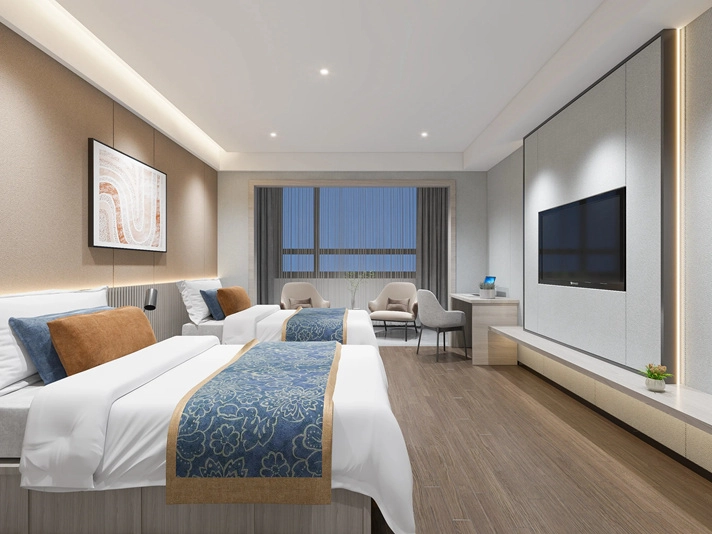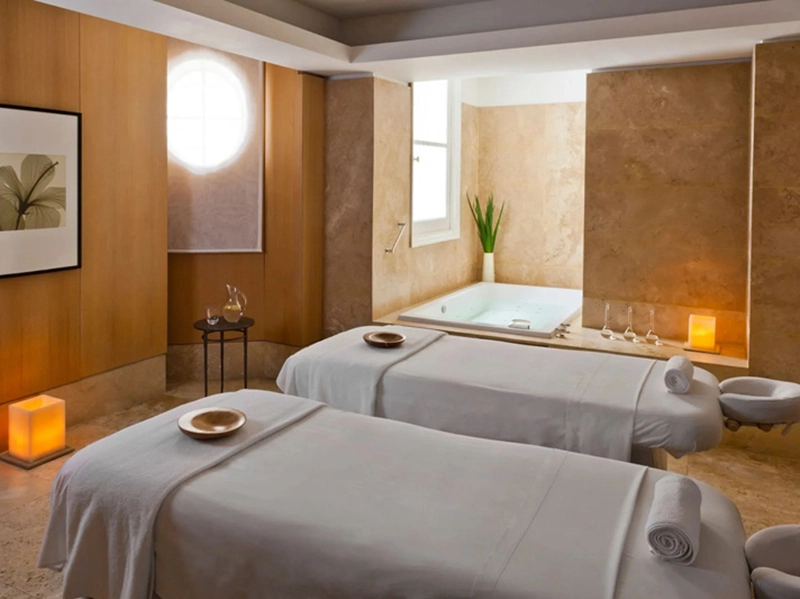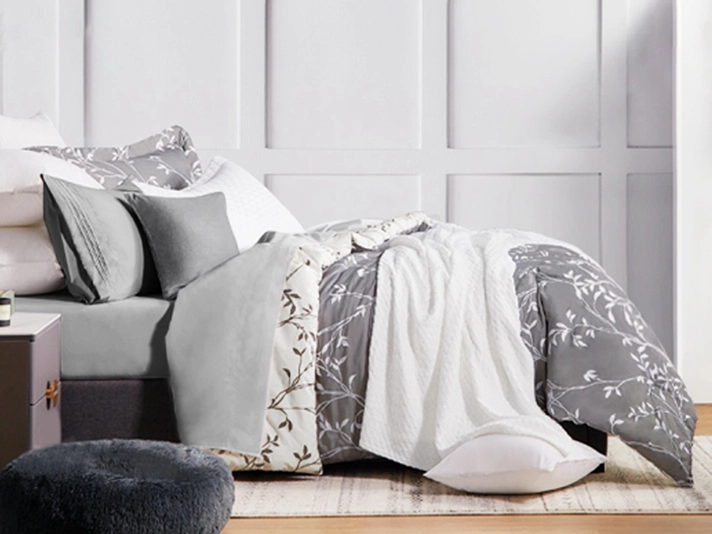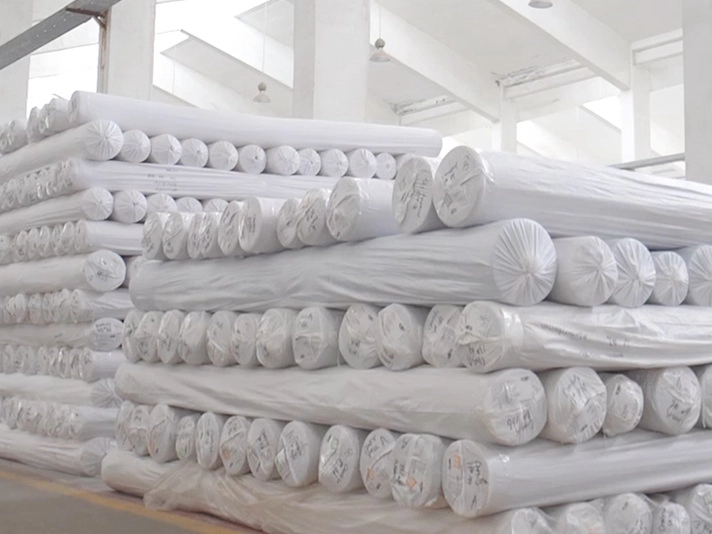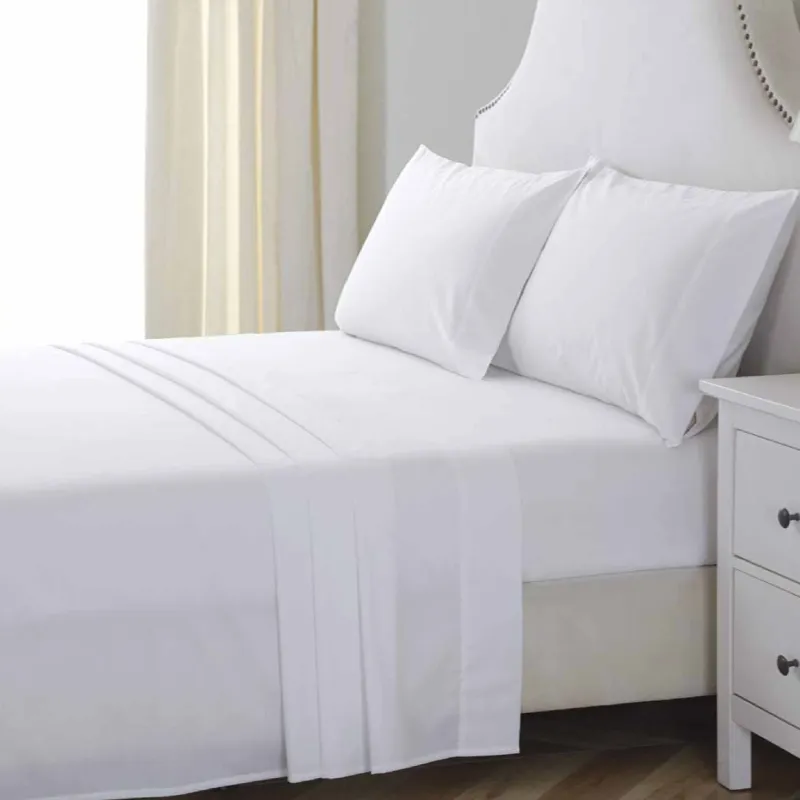How to Cut Linen Maintenance Costs by 30% with Proper Polycotton Ironing
For hotels, motels, clinics, nursing homes, and large-scale laundry operations, maintaining crisp, professional-looking bedding is paramount. Polycotton sheets, blending cotton's comfort with polyester's resilience, are a cornerstone of commercial linen inventories due to their durability, wrinkle resistance, and relative ease of care. However, achieving that perfectly smooth finish without damaging the fabric hinges crucially on using the correct ironing temperature. As a leading manufacturer with over 25 years of deep expertise in producing high-volume bedding solutions, Longshow Textiles Co., Ltd. understands the science behind these fabrics and the practical needs of large-scale operations. This guide provides authoritative insights into safe ironing practices specifically for polycotton bed sheets en polikatoen paslakens.
Understanding the Polycotton Sheets Advantage in Commercial Settings
Longshow Textiles, headquartered in Shijiazhuang, Hebei, China, has been at the forefront of textile manufacturing since 2000. Our vertically integrated operation, encompassing three highly automated factories spanning over 180,000 sq. ft. and staffed by 280+ skilled professionals, allows us to control every step of the process – from raw material selection to final quality control. This ensures the consistent production of reliable polikatoen lakens designed for the rigors of commercial use. We ship over 126,000 sheet sets monthly (equivalent to 14 x 40ft containers), certified to Oeko-Tex Standard 100 and SGS, guaranteeing safety and quality for end-users.
The popularity of polycotton blends like our standard 60% cotton / 40% polyester fabric stems from their engineered performance. The cotton component provides breathability, softness, and good moisture absorption, while the polyester significantly enhances strength, reduces shrinkage, and, crucially, imparts excellent wrinkle resistance. This blend makes polycotton bed sheets easier to launder and maintain in high-turnover environments like hotels and clinics. Our standard 180 thread count, 40x40s yarn count percale weave offers the ideal balance of durability, comfort, and a smooth, professional appearance – a true "basics style hotel bed linen" made with modern technology that's easy to take care of.
Mastering the Iron for Polycotton Fitted Sheets
Polycotton fitted sheets present a unique challenge due to their elasticated corners. Ironing them requires a bit more finesse than flat sheets to avoid damaging the elastic or melting the polyester fibers. The key principle remains the same: moderate heat is essential.
- Temperature Setting:Always use a medium heat setting on your iron. This typically corresponds to the "Synthetic" or "Rayon" setting (around 300°F or 150°C). Never use the high "Cotton" or "Linen" setting, as this excessive heat (often exceeding 400°F / 200°C) can melt the polyester component, causing irreversible shine, scorching, or even holes. It can also degrade the elastic in the corners, shortening the sheet's lifespan.
- Technique:Lay the fitted sheet flat, smoothing it out as much as possible. Focus ironing on the main body panel first. For the elasticated corners, avoid placing the iron directly on top of the thick elastic band. Instead, carefully iron the fabric around the elastic, pulling the fabric taut to smooth it. If the corners are excessively wrinkled, use light steam sparingly while gently stretching the fabric flat with your other hand. Avoid holding the iron stationary on any area, especially over the elastic.
- Steam Use:Steam can be beneficial for stubborn wrinkles but use it judiciously. Ensure your iron's water reservoir is filled with distilled water to prevent mineral buildup and spotting. Hold the iron slightly above the fabric when releasing bursts of steam for extra tough creases on the body of the polycotton fitted sheet.
Optimal Heat Application for Polycotton Bed Sheets
Standard polycotton bed sheets (flat sheets) are generally easier to iron than fitted sheets due to the absence of elastic. However, the same core temperature rules apply rigorously to protect the fabric blend.
- Ideal Iron Temperature:Stick firmly to the medium heat setting ("Synthetic"/"Rayon"). This temperature is sufficient to relax the wrinkles formed in the cotton fibers without overheating and damaging the polyester. The inherent wrinkle resistance of the polycotton blend means it often requires less intense heat and pressure than pure cotton to achieve a smooth finish.
- Ironing Method:Ensure the sheet is still slightly damp from washing or lightly mist it with water for best results. Start ironing from one corner, moving the iron in smooth, straight strokes with the direction of the weave. Apply steady, even pressure. Avoid sliding the iron back and forth rapidly or using excessive pressure, as this can stretch the fabric. For larger flat sheets, systematically work in sections, folding the ironed part over the ironing board rail to prevent re-wrinkling.
- Preventing Shine and Scorching:The biggest risk with polycotton bed sheets is applying too much heat, leading to a glazed or shiny appearance on the surface – this is melted polyester. If you notice any shine developing, immediately stop and lower the iron temperature. Always test the iron temperature on an inconspicuous area, like a hem, if uncertain. Using a pressing cloth (a thin cotton cloth) between the iron and the sheet provides an extra layer of protection against direct heat and shine, especially recommended for darker colors or if your iron's temperature control is imprecise.
- Post-Ironing:Hang the sheet immediately after ironing to allow any residual moisture to evaporate fully and prevent new wrinkles from forming before it's placed on the bed or stored.
Below are the typical specifications for Longshow's core polikatoen lakens, which form the basis for our recommended care instructions:
|
Parameter |
Specification |
|
Naam |
Bed sheet (Flat & Fitted) |
|
Materiaal |
60% cotton, 40% polyester |
|
Draad telling |
180TC |
|
Garingtelling |
40*40s |
|
Ontwerp |
Percale |
|
Kleur |
Wit of pasgemaak |
|
Grootte |
Kan aangepas word |
|
MOQ |
500 stuks |
|
Verpakking |
6pcs/PE bag, 24pcs/carton |
|
Terme van betaling |
T/T, L/C, D/A, D/P |
|
OEM/ODM |
Beskikbaar |
|
Voorbeeld |
Beskikbaar |
FAQs About Polycotton Sheets Care
What is the safest iron setting for standard polikatoen lakens?
Always use a medium heat setting, typically labeled "Synthetic" or "Rayon" (approximately 300°F / 150°C). This setting effectively smooths wrinkles in the cotton fibers without damaging the polyester component. High heat settings ("Cotton" or "Linen") risk melting the polyester, causing shine, scorch marks, or holes.
Can I safely iron polikatoen paslakens without ruining the elastic?
Yes, you can safely iron them using medium heat. The crucial step is to avoid placing the hot iron directly on top of the thick elastic band itself. Focus on ironing the fabric body and carefully smooth the fabric around the elasticated corners. Use light steam sparingly on the fabric near the elastic if needed, and avoid holding the iron stationary over the elastic.
How can I prevent shine or gloss when ironing my polycotton bed sheets?
Shine occurs when the polyester fibers melt due to excessive heat. To prevent this: 1) Strictly adhere to the medium heat setting; 2) Never leave the iron stationary on one spot; 3) Ensure the sheet is slightly damp; 4) Consider using a clean cotton pressing cloth between the iron and the sheet surface, especially for dark colors. If shine appears, immediately reduce the iron temperature.
Is steam recommended for ironing polikatoen lakens?
Steam can be used effectively and is often beneficial for removing stubborn wrinkles from polikatoen lakens. Use it on the medium heat setting. Ensure you use distilled water in your iron to prevent mineral deposits from spotting the fabric. For fitted sheets, use steam lightly around elastic corners, not directly on the elastic band.
Why choose polycotton bed sheets for large-scale hospitality or healthcare applications?
Polycotton bed sheets offer an optimal balance for commercial use. The cotton provides comfort and breathability, while the polyester significantly enhances durability, reduces shrinkage, and improves wrinkle resistance compared to pure cotton. This translates to easier laundering, faster drying, less intensive ironing (at safe temperatures), and a longer lifespan – all crucial factors for cost-effectiveness and maintaining a professional appearance in high-turnover settings like hotels, motels, clinics, and laundries. Longshow's 180TC 40/60 blend is specifically engineered for these demanding environments.
Longshow Textiles Co., Ltd., drawing on 25+ years of deep industry experience as a vertically integrated manufacturer, designs its polikatoen lakens with commercial durability and ease of care in mind. Our commitment to quality, evidenced by Oeko-Tex and SGS certifications, and our streamlined manufacturing across 180,000+ sq. ft. of highly automated factory space, ensures we deliver consistent, reliable products – like our 180TC 60/40 percale sheets – backed by professional expertise. By following these safe ironing guidelines, operators of hotels, healthcare facilities, and large laundries can maintain the crisp, clean appearance of their polycotton bed sheets efficiently and effectively, maximizing the value and lifespan of their linen investment, supported by Longshow's reliable supply chain delivering over 126,000 sets monthly with over 98% on-time performance.
-
Garment Washed Sheets Color Retention Prevents Fading After WashesNuusNov.14, 2025
-
Charcoal Bamboo Sheets Moisture-Wicking Property Enhances Sleep ComfortNuusNov.12, 2025
-
High Quality Satin Sheets Soft Touch Improves Hotel Guest ExperienceNuusNov.12, 2025
-
Poly Cotton Sheets Breathable Weave Reduces Skin Irritation For PatientsNuusNov.12, 2025
-
Microfiber Sheet Stain Resistant Feature Eases Hotel HousekeepingNuusNov.12, 2025
-
Polyester Cotton Bedding Durable Fabric Withstands Frequent Hotel WashesNuusNov.12, 2025
-
Microfiber Pillow Filling Even Distribution Prevents LumpingNuusNov.03, 2025

